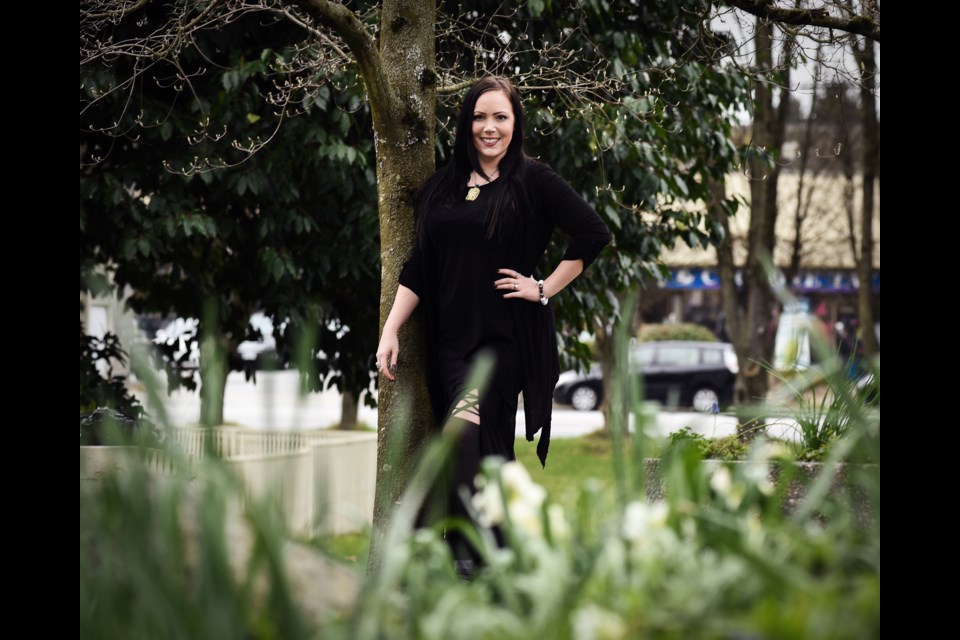An outsider with an overactive imagination might have been disappointed upon arrival at SaturdayŌĆÖs ┬ķČ╣┤½├Įė│╗ŁPagan Pride event.
There were no velvet capes embossed with stars and moons in sight, long-bearded wizards and grimoires, or even lit candles ŌĆö high expectations, admittedly, for what was a humble fundraiser for the pagan community with vendors selling Celtic knot bracelets and handmade soy candles, a silent auction and workshops that included tarot reading and ritual writing.
ED Johnston, first name in caps, is the fundraiser organizer and coordinator for SeptemberŌĆÖs ┬ķČ╣┤½├Įė│╗ŁPagan Pride day. The latter is a role she stepped into three years ago with the idea of making the community more accessible to those who might be interested in learning more about the earth-based, spiritual path.
Talk veered towards, naturally, clothing and what Johnston describes as ŌĆ£the pagan uniformŌĆØ of long skirts and loads of jewelry.
ŌĆ£Sometimes people get scared away because they feel they donŌĆÖt look the part,ŌĆØ she said during a lunch break outside the Unitarian Church of ┬ķČ╣┤½├Įė│╗Łwhere the group rented a room to hold the fundraiser. ŌĆ£Even with the sabbat announced today, IŌĆÖm encouraging people to dress however they want to dress. You donŌĆÖt have to come in the pagan uniform. Come as you. Sometimes IŌĆÖm wearing a cloak and a broomstick skirt, sometimes IŌĆÖm wearing jeans and a T-shirt.ŌĆØ
The style of clothing attached to North American paganism is a product of the times when it experienced growth spurts during the 1960s and ŌĆÖ70s when many followers were long-haired and long-skirted hippies, and again during the 1990s when Gothic fashion was very much in style, Johnston said. There are many different paths that fall under the wide umbrella of paganism and neo-paganism, but the best way to describe it is as an Earth-based religion that includes spiritual or religious practices that honour pre-Christian, classical, aboriginal, or tribal deities, including beliefs based on shamanism or magical practices. Also, some practitioners donŌĆÖt consider paganism to even be a religion.
ŌĆ£ThereŌĆÖs this belief that only eccentrics and weird people are pagan,ŌĆØ said Johnston. ŌĆ£Not saying we donŌĆÖt have our eccentrics and weird peopleŌĆ” YouŌĆÖll see particularly at the bigger outdoor events, fairy wings and billy bobbers on heads and stuff like thatŌĆ” And of course, cloaks. YouŌĆÖll see people dressed in cloaks and youŌĆÖll also see people in jeans and a freaking T-shirt! Of course they might be wearing their pagan T-shirt, it might have a little green man on it or something, or they might be wearing a Canucks jersey.ŌĆØ
ŌĆ£Or,ŌĆØ added ┬ķČ╣┤½├Įė│╗ŁPagan Pride media coordinator Julie Hodge who joined in the conversation, ŌĆ£a Tapout shirt!ŌĆØ
Like books and their covers, itŌĆÖs a reminder people cannot be judged for wearing MMA brand clothing or anything else of their choice. ItŌĆÖs also proof people of all walks of life identify with the highly-individualized practice of paganism. With a history that traces back to ancient times, paganism can be found in all corners of the world. African paganism, for example, can include tribal religions while in Europe, traditions can include Norse, Celtic and studies of witchcraft and Wicca.
In Canada, and locally, itŌĆÖs a mystery how many follow paganism as thereŌĆÖs no way of keeping track.
ŌĆ£We donŌĆÖt have churches, we donŌĆÖt have synagogues, we donŌĆÖt have official spaces in which to worship. We tend to practise in each otherŌĆÖs homes,ŌĆØ said Johnston, who only practises with groups. (Hodge, on the other hand, practises alone.) ŌĆ£And thereŌĆÖs only so many people you can have in your house.ŌĆØ
┬ķČ╣┤½├Įė│╗ŁPagan Pride is part of an international network in which pagan groups are encouraged to hold a public celebration in the name of education, networking and community. The international rules found on the organizationŌĆÖs website state celebrations must include a public ritual, a food drive and be held on a date between August and October before mabon, the pagan Thanksgiving. VancouverŌĆÖs Pagan Pride day is Sept. 10 this year at John Hendry Park (Trout Lake).
ŌĆ£As far as I know, and I could be wrong, but Pagan Pride is the only event that welcomes non-pagans,ŌĆØ said Johnston. ŌĆ£Most events are ŌĆścome and worship if you follow this pathŌĆÖ whereas weŌĆÖre trying to create a space that is about worshipping whatever path you follow, or just come and learn. WeŌĆÖre actively working on encouraging the public who knows nothing about paganism to come and check us out.ŌĆØ
Last yearŌĆÖs ┬ķČ╣┤½├Įė│╗ŁPagan Pride celebration at John Hendry Park was snuffed out by a massive windstorm that hit the city Aug. 29. The wind and a falling tree ruined tents, and Johnston is hoping SaturdayŌĆÖs fundraiser will recoup some of the replacement costs, as well as some of the expenses several artisans suffered when their crafts were lost or damaged.
ŌĆ£It was a freak storm, the weather report never said wind warning,ŌĆØ Johnston said. ŌĆ£The three seconds I was interviewed [by the media] I talked about the irony of that ŌĆö how weŌĆÖre here to celebrate our earth-worshipping past and the Earth is like, ŌĆśNope, not today.ŌĆÖŌĆØ
@rebeccablissett



